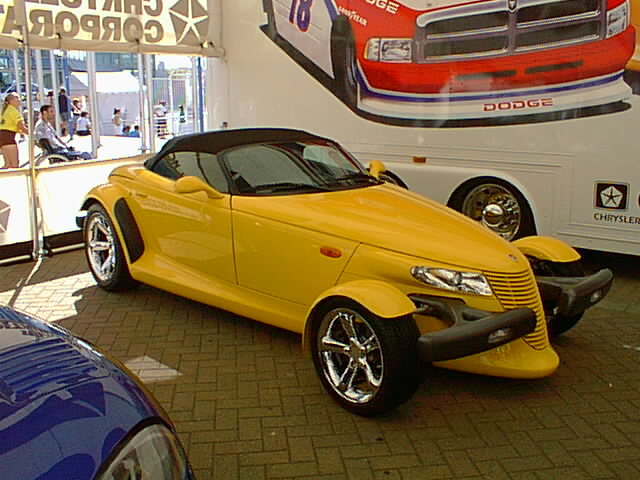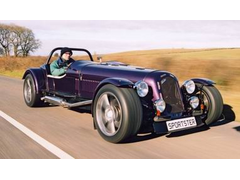iwbunting
|
| posted on 10/5/04 at 07:33 PM |

|
|
Materials for front and rear wishbones.
I have been looking at some of the latest setups and have found that oval tube is being used more on wishbones than box or round.
Why...???
I have found a source of oval tubing but wondered what the difference is in yield strengths between it(oval) and square or round for instance.
Any ideas on the subject????????
|
|
|
|
|
I love speed :-P
|
| posted on 10/5/04 at 07:47 PM |

|
|
try reading this, lots of deatail
http://locostbuilders.co.uk/viewthread.php?tid=12587
[Edited on 10/5/2004 by I love speed :-P]
Don't Steal
The Government doesn’t like the competition
|
|
|
Screwy
|
| posted on 10/5/04 at 07:55 PM |

|
|
Have to agree with that  I tend to spend a few hours a week just reading through old threads and bookmarking those i think may be usefull , try the
above link for an interesting discusion on wishbones and yield strengths also try the search function I tend to spend a few hours a week just reading through old threads and bookmarking those i think may be usefull , try the
above link for an interesting discusion on wishbones and yield strengths also try the search function 
[Edited on 10/5/04 by Screwy]
|
|
|
leto
|
| posted on 10/5/04 at 08:39 PM |

|
|
I believe the primary benefit from oval tubing is reduced drag, not structural strength.
|
|
|
locoboy
|
| posted on 10/5/04 at 09:47 PM |

|
|
Reduced drag!
Thats going to the extremes isnt it? it will be reconstructive aerodynampic drag reducing facial plastic surgery next 
Get rid of that bloody great hole in the front of the nose cone as the first attempt to reduce drag.................keep a keen eye on the temerature
guage if you do though!
ATB
Locoboy
|
|
|
stephen_gusterson
|
| posted on 10/5/04 at 09:56 PM |

|
|
quote:
Originally posted by leto
I believe the primary benefit from oval tubing is reduced drag, not structural strength.
there was me thinking that people used oval on locost wishbones just cos it looked nice........
atb
steve
|
|
|
craig1410
|
| posted on 11/5/04 at 12:15 PM |

|
|
I agree with Steve, it just lets you use a larger tube without it looking clumsy, provided of course that you put the major axis front to back...
I'm using 22mm x 2.64mm wall round section and it's fine in my opinion. The oval section GTS Tuning wishbones look very nicely made and
are acknowledged by many to be a good design.
Bear in mind if you stick with standard mounting points then you can always change wishbones at a later date if you are unhappy with what you get
initially.
Cheers,
Craig.
|
|
|
leto
|
| posted on 11/5/04 at 08:05 PM |

|
|
Yes, its a larger tube but you don't get very much structural bonus from it. But I agree with Steve, it looks grate 
Cheers
Leif
|
|
|
scutter
|
| posted on 11/5/04 at 09:01 PM |

|
|
Can you tell us what the source is or is it secret
Dan.
|
|
|
NS Dev
|
| posted on 11/5/04 at 11:23 PM |

|
|
Simple source for good quality round (not oval) tube is seamless hydraulic tubing. This is good quality, not too pricey and pretty easy to get hold
of. Pretty pointless worrying about the yield strength of the tube when you are going to weld it anyway and totally change it's properties
around the weld.
NS Dev, development engineer at seamless steel tube rolling mill.
|
|
|
crbrlfrost
|
| posted on 13/5/04 at 02:26 AM |

|
|
Frankly, I don't see much aerodynamically wrong with the big hole in the front of the locost, depending on how its used. Afterall, properly
routed radiator exhaust can be used beneficially, and there is excess capacity there if you wanted to route air directly to important
areas....intakes, exhaust manifolds close to body work, etc. Oh yeah, this is about oval tubing....umm, cool stuff, probably just as stiff in bending
as round tube of same cross section (height wise). Don't know if it'll increase top speed though, kind of frivilous. Did I mention it
looks cool?
|
|
|
Cita
|
| posted on 13/5/04 at 05:48 AM |

|
|
The "big hole" in front of the locost is'nt exactly a big hole,it's a big hole blocked off by a radiator.Try to hold that
radiator outside your window driving at 60 mph and you will notice immediately the drag such a small surface can create. 
Oh yeah you... are talking about oval tubing for wishbones, oval tubing is probably stronger,compared to round tubing,under breaking.
|
|
|
crbrlfrost
|
| posted on 13/5/04 at 06:23 AM |

|
|
I'll grant there is a big radiator in that large hole, but if you blocked off the whole, you'd still be dealing with the same frontal
area. Versus hanging it out the window would increase the overall area.  Not to mention ducting the radiator exhaust into the upper cowling can help
contribute to increased radiator flow efficiency, as well as reduced lift on the front end. Not to mention you don't end up shooting hot air
directly over the hot engine. Often times internal flows are just as important as external ones. Not to mention ducting the radiator exhaust into the upper cowling can help
contribute to increased radiator flow efficiency, as well as reduced lift on the front end. Not to mention you don't end up shooting hot air
directly over the hot engine. Often times internal flows are just as important as external ones.
|
|
|
Terrapin_racing
|
| posted on 13/5/04 at 08:41 AM |

|
|
Hilmar tubes in Manchester is an absolute goldmine of profiles - round, square rectangular, oval in ERW, CDM you name it!
huge place
http://www.hilmar.co.uk/
mail then for a list
|
|
|
stephen_gusterson
|
| posted on 13/5/04 at 09:20 AM |

|
|
in my humble opinion, the big gaping style less hole in the front of a 7 type car is what letds the whole thing down.
It looks a bit naff. Most cars have the front and rear as a major styling feature - a 7 type has basically an open tube at its front. The rest of the
car look good as a simple styling excercise, but the front doesnt work for me. Just look at the luego banner ads, at the orange car , for example.
its all in the eye of the beholder, but I recon the front of this looks great......
 
Rescued attachment prowler.jpg
|
|
|
Cita
|
| posted on 13/5/04 at 10:41 AM |

|
|
That front indeed look's great and probably will have the same airflow benefits,if not better,and it will reduce frontal drag significantly.
|
|
|
Dale
|
| posted on 13/5/04 at 09:09 PM |

|
|
I am using the front similar to the marlin sportster, not as aero as the last post but smoother than the seven nose.
Dale
 
Rescued attachment small marlin.jpg
|
|
|
JB
|
| posted on 20/5/04 at 08:27 PM |

|
|
Oval Tube and Radiators
Another advantage of oval tube is that it is aeasier to weld in ends to take staked in spherical joints.
It is actually theoretically possible to get thrust from a properly designed radiator duct. The thrust coming from the heat energy.
Basically you have an opening approx .3 to .25 the area of the radiator, a duct expanding at a maximum angle of 14 degrees (any more and the air flow
becomes detached) to the radiator. This expanding duct slows the air flow so it can absorb more heat. After a radiator you then require a converging
duct to speed the air up again before it rejoins the outside air.
Other small points are radiused entries to the duct for when the vehicle is in yaw.
JB
|
|
|
NS Dev
|
| posted on 20/5/04 at 10:24 PM |

|
|
Hello John! This is Nat, how did you get on at Shelsley, just to go completely off topic!!
|
|
|
M@Triton
|
| posted on 20/5/04 at 11:14 PM |

|
|
Smartie boxes covered in sticky black plastic would be stronger than some 'bones i have seen..!
|
|
|
robinbastd
|
| posted on 20/5/04 at 11:16 PM |

|
|
Another product of the Blue Peter watching generation?
Only a dead fish swims with the tide.
http://smuttygifts.com/
|
|
|
Cita
|
| posted on 21/5/04 at 05:21 AM |

|
|
The airflow in the noscone is a chaos with all the tubes,radiator, hoses etc...so it would be very unlikely that any "thrust" can be
gained.The temp diff before and after the radiator is way to small and has to many "leaks" to built up any pressure for the air to be
accelerated and form "thrust".There would be not enough room left for a radiator when the nose cone of a 7 would be made to have internal
boundary layer characteristics.
|
|
|
splitrivet
|
| posted on 21/5/04 at 08:43 AM |

|
|
Aaaah Steve the Plymouth prowler now that is the ultimate 7 clone, its bleeding beautifull.
Cheers,
Bob
I used to be a Werewolf but I'm alright nowwoooooooooooooo
|
|
|









